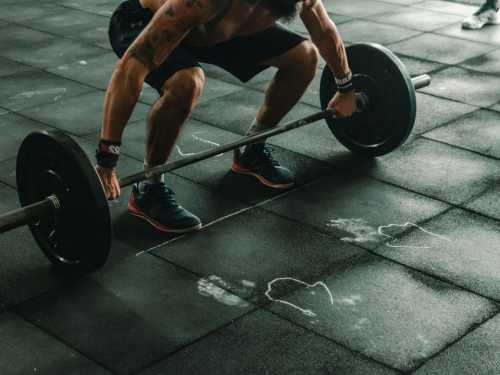
But here's the thing: after a while, you won't be able to get out of bed because your muscles ache like they've been ground in a meat grinder, and your urine turns the color of dark beer. And this is a life-threatening condition.
This dangerous condition is called rhabdomyolysis. And it's not at all the same as the usual soreness after a good workout. It's a pathological process when muscles begin to break down en masse.
Imagine billions of muscle cells. When subjected to excessive strain, to which they are not adapted, the cells cannot withstand it and begin to break down. Their contents — the protein myoglobin, potassium, creatine kinase, and other enzymes — are released into the bloodstream in a powerful stream. And then the body's fight for life begins.
Oddly enough, very often the causes of rhabdomyolysis are not accidents, but conscious actions of a person guided by good intentions: to pump up, lose weight, become stronger and more resilient.
What is dangerous about this?
When myoglobin gets into the kidneys, it clogs their delicate tubules. Acute renal failure develops. The kidneys stop working. Toxins that should be excreted remain in the blood, poisoning the entire body.
High potassium levels can lead to cardiac arrest. This is a real threat to life, requiring immediate hospitalization and often intensive care, including dialysis.
Symptoms of rhabdomyolysis:
- Muscle pain. Unusually severe, spreading, often asymmetric (for example, only in the legs). Muscles may be swollen, tight to the touch.
- Weakness. You can't hold a cup of tea in your hands, and climbing stairs is a daunting task.
- Change in urine color is the MAIN symptom! Urine becomes dark brown, resembling “Coca-Cola” or “dark beer.” This is the same myoglobin that clogs the kidney filters.
- General symptoms: Nausea, vomiting, confusion, rapid heartbeat (due to the release of a huge amount of potassium into the blood).
Causes of rhabdomyolysis:
1. Sports heroism. “The rookie who strives for records,” “the professional who ignores signs of overtraining.” One excessive load (for example, 300 sit-ups after a year of inactivity) can start the process.
2. Dehydration. Training in a stuffy gym without enough water is a direct path to increasing the concentration of toxins in the muscles and blood.
3. Trauma and prolonged compression. Road accidents, falls, and even banal prolonged sleep in an uncomfortable position while intoxicated.
4. Viral infections. Carrying the flu “on your feet” and going to the gym is a bad idea. A weakened body easily succumbs.
5. Use of certain medications and supplements. Be careful with statins and some fat burners, especially in combination with heavy physical exertion.
Sport is not violence against the body. The elixir of youth and health is regular and adequate exercise. If you haven't played sports for a long time or have just decided to add physical activity to your life, start gradually. Don't rush to the barbell if the last thing you lifted for several years in a row was a bag of groceries. Listen to your body. Pain is a stop sign.
Always drink water during your workouts. Be sure to give yourself some rest. Muscles grow and repair during rest periods.
Don't exercise if you're sick. Infection + stress = an explosive mixture.
Your goal is not to end up in intensive care with a diagnosis of rhabdomyolysis, but to live a long, active, and healthy life.
Джерело: ukr.media






